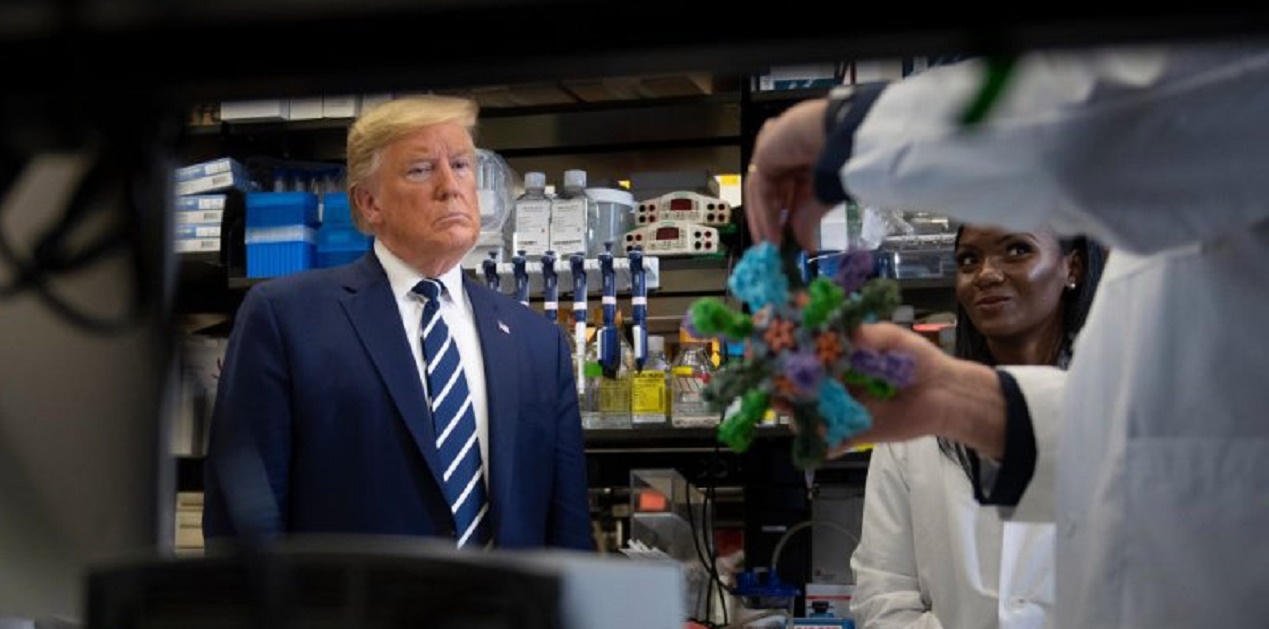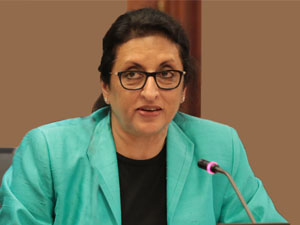The COVID-19 pandemic continues to ravage the United States. In June, the US crossed the two million mark in infected cases and has reported over 117 thousand deaths. Of these, New York alone has recorded over 382,000 cases, far higher than most nations in the world. Although the United States seems to have flattened the curve, infections continue to rise in some states even as the US administration prepares to open limited economic activity to save the economy from free fall. Over the past three months, more than 40 million workers have filed claims for unemployment insurance though the number of those without jobs is much higher as people struggle to stand in long lines to file claims and there are many who have not even tried to register due to difficulty in filing applications. The US unemployment rate has jumped from 3.5% in February this year to a phenomenal 14.7% in May, the worst since the Great Depression.
The situation is grim as the death toll is almost double the number of Americans who died in the Vietnam War. The richest and most advanced nation in the world now accounts for nearly a quarter of the world’s 7.41 million cases. Though the number of U.S. deaths that was averaging about 2,000 per day during April-May, has come down to about a thousand cases per day, with the highest global fatalities, the impact of the pandemic remains severe. Scientists are still trying to understand the new pathogen and health systems in hard-hit areas like New York, Boston, New Orleans and Detroit struggle under the strain placed on hospitals and front-line health care workers.
New York especially has not witnessed such grim times. According to an eyewitness account, “The sirens are unceasing. Funeral parlours are overwhelmed. Refrigerator trailers are now in service as morgues, and can be found parked outside hospitals all over town.”1 In one of his briefings Andrew Cuomo, the Governor of New York said, “The bad news isn’t just bad …the bad news is actually terrible.”
Across the United States, the coronavirus continues to severely impact the aged and the vulnerable all across the country, including jail inmates in Cook County jail, in Chicago, to workers at the Tyson Foods poultry plant in Georgia. Data from a variety of reliable sources show that African-Americans, who suffer disproportionately from poverty, inadequate housing, and limited access to good health care, and chronic illnesses such as diabetes and hypertension, are more vulnerable and hence dying from COVID-19 at alarming rates.2
Another visible trend is that the coronavirus pandemic that has so far devastated some of America's largest cities is now spreading to the country side and rural areas. This has taken the virus that was at one time down played by President Trump, to those areas where his voter base, that sent him to the White House, is concentrated. Data shows that while in the early stages the disease was concentrated in large urban areas like Seattle, San Francisco and then New York City, has in recent weeks spread to the country side and southern states like Mississippi, Alabama and Georgia and the American Midwest. States like Arkansas, Iowa, Kansas, Nebraska, New Mexico and Wisconsin have in recent weeks recorded their highest daily count of Coronavirus cases.
The spread of the coronavirus to rural areas has been slower largely due to certain in-built defences. A significant factor is a lower population density which automatically means more natural social distancing. The second is the lack of a public transport system in many rural communities which has spread the virus in places like New York City. While some rural communities may have fewer connections to big cities, but those connections exist, meaning the virus will spread.
Epidemiologists are worried that the slow spread of the virus into rural America means it is only now arriving in communities that have been on lockdown for weeks and were now planning to open up economic activity.3 In case the lockdown needs to be extended, there is the fear that Trump’s early attempts to downplay the virus, coupled with the corona virus’s slow arrival, will make conservative rural voters, a traditional Trump voting base, sceptical about the efficacy of his leadership which could in turn negatively impact the outcome of the November election for him.
The spread of the virus to rural America has started to impact rural Americans who are older, more prone to co-morbidities like diabetes, hypertension and heart disease. These areas and communities also have fewer hospitals and other infrastructure to deal with such emergencies, especially since a potential surge in cases is predicted. Rural hospitals have been under stress and have faced closure due to shortcomings in the US healthcare system. Budgetary cuts in recent years have led to closure of many rural hospitals denying hundreds of local communities basic health care, and the pandemic has only put further budgetary pressure on those few hospitals that remain, as states are forced to order freezes on elective surgeries and patients cancel scheduled doctor visits.
Simply put, the coronavirus that first landed among voters who favoured former Secretary of State Hillary Clinton in 2016 is now spreading to voters who backed Trump. As the US faces a Great Depression-era like economic fallout from the COVID-19 pandemic, and there seems to be no chance of a substantial economic rebound before the fall, this matter will become a major debating point in the US election campaign.
Congress has injected almost $3 trillion to limit the adverse impact of the pandemic on the US economy which at one point seemed to be headed for a free fall. The US administration has taken remedial measures and sanctioned a substantial coronavirus relief bill to help small businesses and hospitals. While the initial package of nearly $500 billion gave $320 billion to replenish the Paycheck Protection Program, which was emptied within two weeks after the CARES Act was passed in late March, $75 billion to aid hospitals and an additional $25 billion to increase testing nationwide were distributed.
This relief package is being viewed by many as insufficient to control the damage to the US economy. It has acted a political fodder for Trump’s opponents, especially as the 2020 election cycle gets underway that will witness not just the Presidential elections, but also new incumbents to the Senate and US Congress. The challenge is immense and becomes even more enormous in an election year. In an interview with The Washington Post, Robert Redfield, the director of the US Centres for Disease and Prevention (CDC), warned that a second wave of the coronavirus will be far direr because it is likely to coincide with the start of flu season. He said, “There’s a possibility that the assault of the virus on our nation (coming) winter will actually be even more difficult than the one we just went through.”
Confronted with a difficult situation, Trump has been accused of trying to deflect attention from his administration’s earlier botched attempts to take effective action against the pandemic by blaming immigrants, China, the “fake news” and, of course, “the invisible enemy” of the coronavirus for America’s present troubles. He has attracted negative press about his plans to hold a grand Fourth of July celebration on the National Mall or when he called himself “the king of ventilators,” and spent much time bemoaning about how the pandemic had inflicted a crushing blow to “the greatest economy in the history of the world.”
In the midst of the worst global pandemic in a century, President Trump has shifted attention back to his bedrock issue of immigration. He has seized on the pandemic to engineer an immigration ban he’s sought for years, framing it as a step to protect domestic jobs and public health with the U.S. economy continuing to tank. For India any such news is a matter of concern especially since there are reports that the US President Donald Trump is considering suspending a number of employment visas including the H-1B, most sought-after among Indian IT professionals, in view of the massive unemployment in America due to the coronavirus pandemic, according to a media report.4 The Wall Street Journal quoting unnamed US administration officials writes that the proposed legislation could impact the issuance of visas beginning October 1, 2020, which coincides with the US government's new fiscal year, when many new visas are issued.
Endnotes
- The Preëxisting Condition in the Oval Office | The New Yorker. https://www.newyorker.com/magazine/2020/04/20/the-preexisting-condition-in-the-oval-office
- Ibid
- Coronavirus spreads to Trump country | TheHill. https://thehill.com/homenews/state-watch/494561-coronavirus-spreads-to-trump-country
- Donald Trump considering suspending H1B, other visas .... https://www.hindustantimes.com/world-news/donald-trump-considering-suspending-h1b-other-visas-report/story-IOMwjkhKwe6n2WF6bbOoYL.html
(The paper is the author’s individual scholastic articulation. The author certifies that the article/paper is original in content, unpublished and it has not been submitted for publication/web upload elsewhere, and that the facts and figures quoted are duly referenced, as needed, and are believed to be correct). (The paper does not necessarily represent the organisational stance... More >>
Image Source: https://api.time.com/wp-content/uploads/2020/03/GettyImages-1204945660.jpg?w=800&quality=85











Post new comment